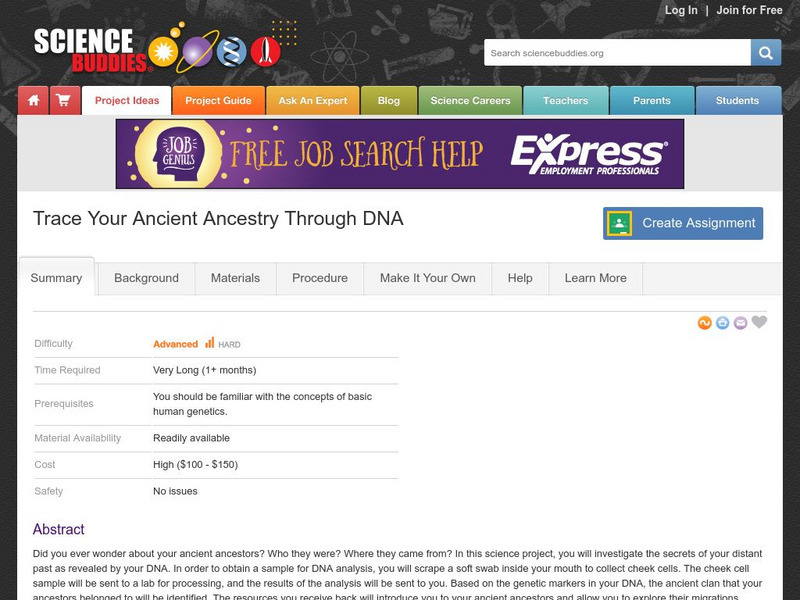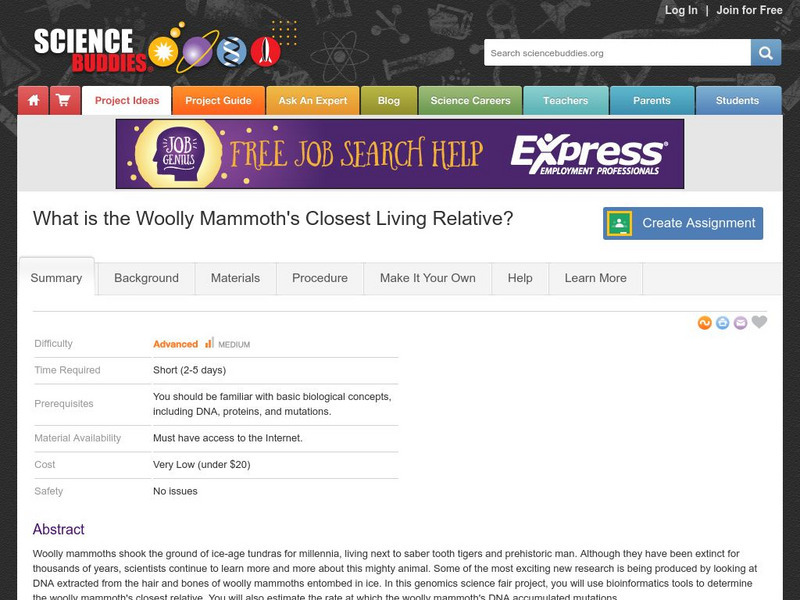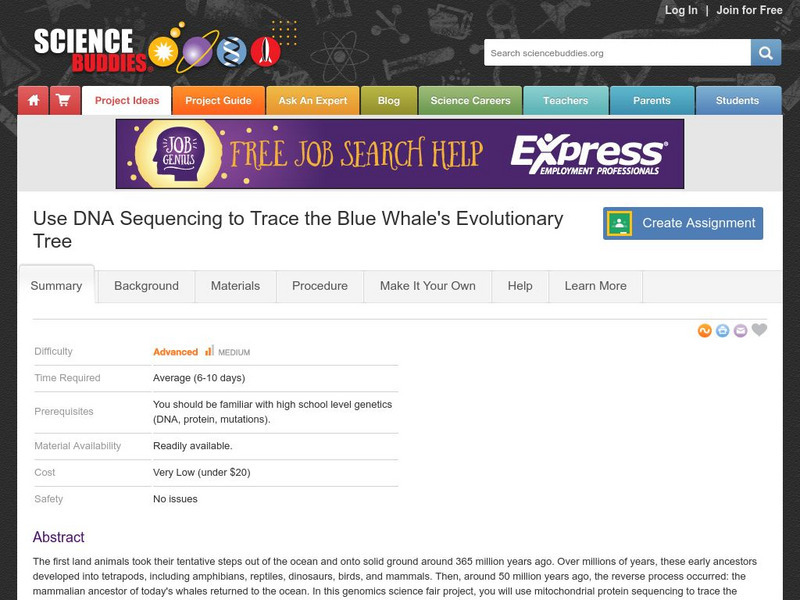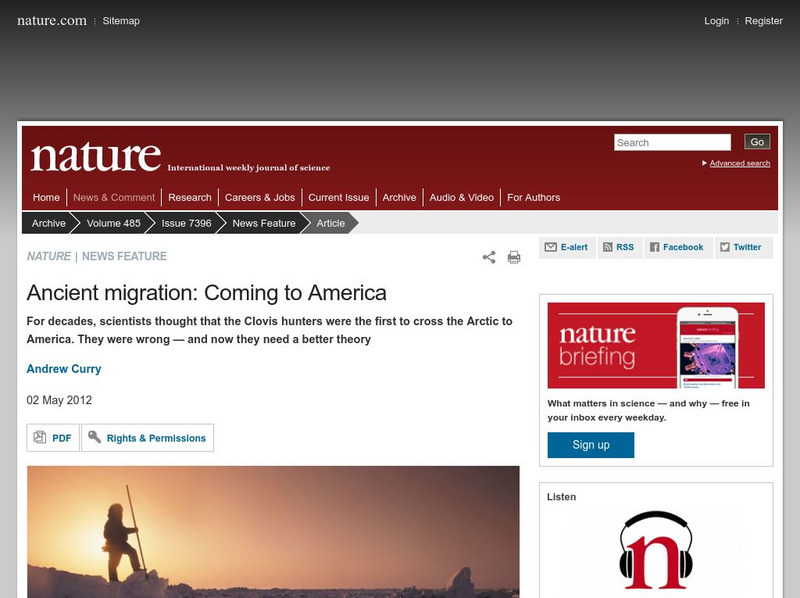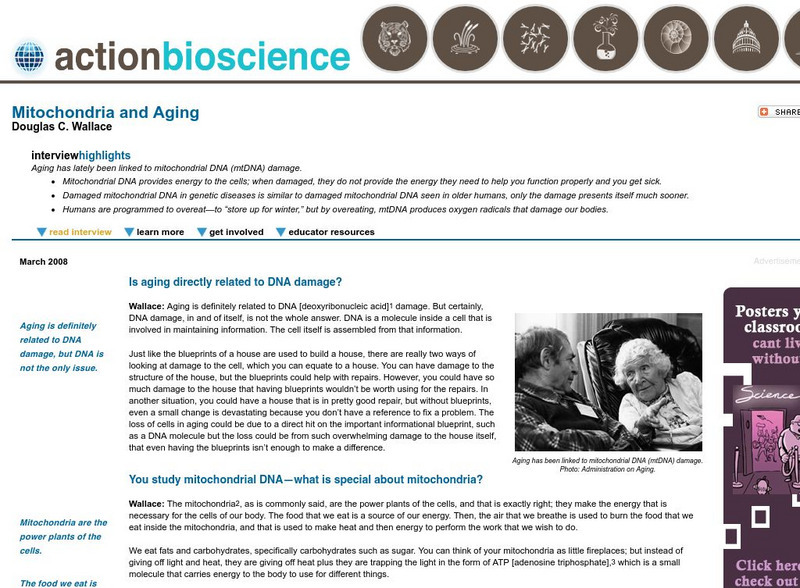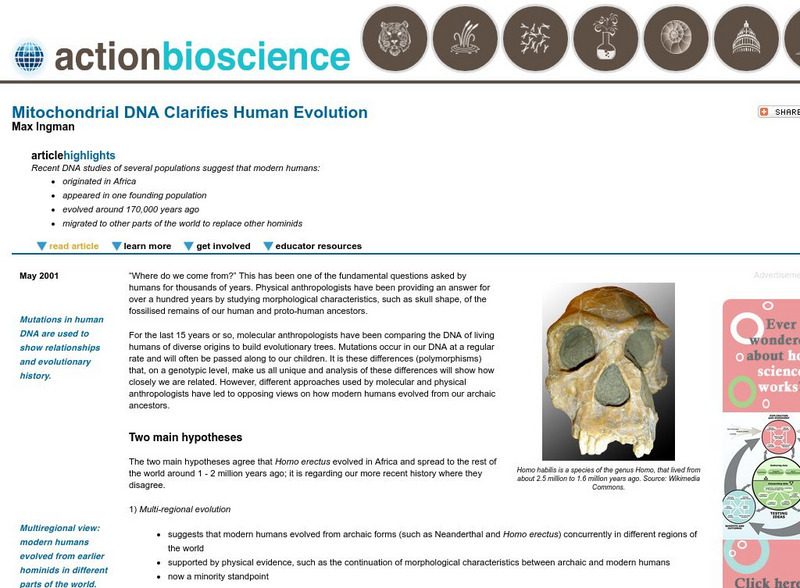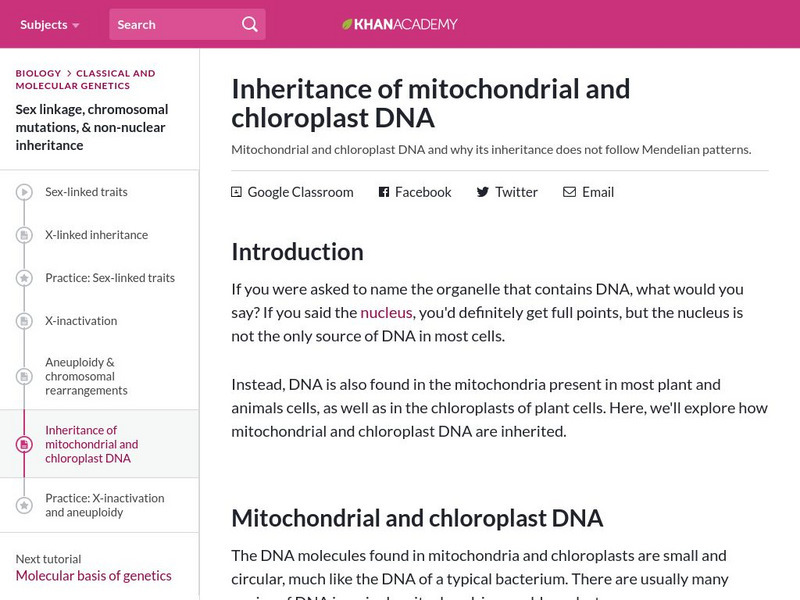Curated OER
Roots: The Ancestry of Modern People
High schoolers investigate the models for the origin of modern humans and the conditions that facilitate speciation and evolution. The classification and nomenclature of hominid species is also examined.
Curated OER
America's Stone Age Explorers
Students research how mitochondrial DNA is used in determining familial relationships. They complete a worksheet in which they attempt to help solve the identity of bones found in Africa.
Curated OER
Global Awareness
Students read about how scientists are arriving at current theories of human origin and migration through mitochondrial DNA analysis. They then piece together a map showing the data from mitochondrial DNA analysis to plot the migration...
Cold Spring Harbor Laboratory
Dna From the Beginning: Higher Cells Have Ancient Dna
Eukaryotic cells have separate DNA from mitochondria and chloroplasts which indicates that they were once primitive cells on their own. This multimedia article includes animations, pictures, video, biographical information, and quiz...
Science Buddies
Science Buddies: Trace Your Ancient Ancestry Through Dna
In this science project, you will investigate the secrets of your distant past as revealed by your DNA. In order to obtain a sample for DNA analysis, you will scrape a soft swab inside your mouth to collect cheek cells. Based on the...
Science Buddies
Science Buddies: What Is the Woolly Mammoth's Closest Living Relative?
Although Woolly Mammoths have been extinct for thousands of years, scientists continue to learn more and more about this mighty animal. Some of the most exciting new research is being produced by looking at DNA extracted from the hair...
Science Buddies
Science Buddies: Use Dna Sequencing to Trace the Blue Whale's Evolutionary Tree
Around 50 million years ago, the mammalian ancestor of today's whales returned to the ocean. In this genomics science fair project, you will use mitochondrial protein sequencing to trace the evolution of whales and identify their closest...
Smithsonian Institution
Encyclopedia Smithsonian: Paleoamerican Origins
This detailed article from the Encyclopedia Smithsonian lays out the theories and evidence of who were the earliest inhabitants of North and South America. Beginning with the traditional theory of migration using the land bridge, and...
American Institute of Biological Sciences
Action Bioscience: Mitochondrial Dna Clarifies Human Evolution (2001)
DNA of the mitochondria has most commonly been used to construct evolutionary trees. New field of population genetics hopes to resolve important questions in migration theories that involve Aboriginies in Australia, North America, and...
PBS
Pbs Teachers:america's Stone Age Explorers
Discover how mitochondrial DNA (mtDNA) is inherited, and complete a pedigree chart by determining which individuals might share mtDNA with an unknown ancestor.
National Institutes of Health
National Library of Medicine: Genetics Home Reference: Mitochondrial Dna
A thorough overview of mitochondrial DNA.
Nature Research
Nature News and Comment: Ancient Migration: Coming to America
A May, 2012 news feature from Nature magazine looks again at early migration theories that brought man across the Arctic to America. Was Clovis man really the earliest?
American Institute of Biological Sciences
Action Bioscience: Mitochondria and Aging
Following extensive research done by Dr. Douglas Wallace of the University of California, Irvine, it has been discovered that mitochondial genes affect the aging process. In an interview with the genetics scientist details are shared...
American Institute of Biological Sciences
Action Bioscience: Mitochondrial Dna Clarifies Human Evolution
Deep mitochrondrial DNA research has revealed information identifying the origin of modern humans, the founding population, a general date of humans evolving, and the migration of these humans across the planet. Read further to discover...
PBS
Nova: Identifying Remains With Dna
Mitochondrial DNA has different properties than nuclear DNA which make it beneficial in certain forensic settings. Get the details on the ways mitochondrial DNA is being used in forensic science.
Other
Mitochondrial Dna Adaptations in Human Population (2004)
Hawks's research involves the use of mtDNA studies to hypothesize the ability to survive in certain climatic zones.
Khan Academy
Khan Academy: Inheritance of Mitochondrial and Chloroplast Dna
Find out about mitochondrial and chloroplast DNA, and why its inheritance does not follow Mendelian patterns.
Other
M.tevfik Dorak's: Mitochondrial Dna
A high level discussion of the difference between mtDNA and nuclear DNA. Dables in the concept of using mtDNA to determine ancestry.




